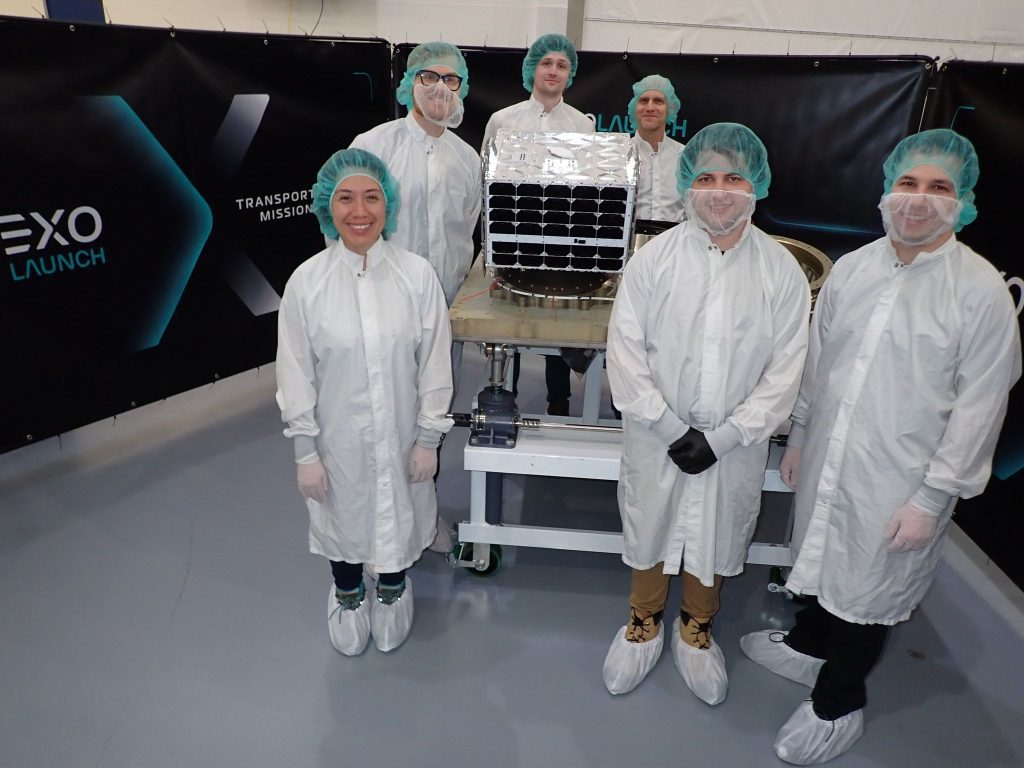CEO and cofounder Ryan Westerdahl stated that Turion Space's debut satellite should be ready to begin imaging objects in space by May after almost a year of commissioning in low Earth orbit (LEO).
The California-based space situational awareness (SSA) startup, which is three years old, first activated the imaging sensor on its 32-kilogram Droid.001 spacecraft a couple of months ago, according to Westerdahl. The satellite was launched by SpaceX in June..
Westerdahl explained that they waited to ensure good control of the satellite before activating the optical sensor, in order to avoid damaging it. SpaceNews He mentioned in an interview that they did not want the satellite to suddenly point the imager at the sun.
However, Turion is still working on software updates to precisely control Droid.001 and point the imager at debris and other passing objects.
The company is also still adjusting the satellite’s payload and improving the ground infrastructure.
Although Westerdahl had hoped to start providing services with the spacecraft before the end of 2023, he emphasized that the main mission was to get a satellite into orbit quickly, perform a useful task, and learn what is necessary for future satellite construction and operation.
He added that encountering issues that do not fully compromise the mission is beneficial, as it allows them to address and resolve future concerns.
Lithuania’s NanoAvionics provided the bus and subsystems for Droid.001, which Turion integrated in-house.
HEO (High Earth Orbit), an Australian space imagery provider, supplied the imager and is also a customer for Droid.001. HEO attracted $8 million from investors in August and plans to use the imagery for in-orbit inspections. Turion also aims to sell the imagery to the U.S. Department of Defense and to satellite operators looking to improve their space situational awareness. Additionally, Turion hopes to sell the imagery to the U.S. Department of Defense and satellite operators, who are seeking to enhance their SSA.
Ultimately, the company plans to develop and operate spacecraft capable of performing in-orbit services, including debris removal, and intends to launch its first “enhanced mobility vehicle” in 2026 for a de-orbiting demonstration by early 2027.
Westerdahl explained that SSA data is essential for tasks like debris removal from uncooperative objects and is currently marketable and sellable. He also expressed uncertainty about the future of this market, especially with other debris removal startups still years away from commercial missions.
He added that data is a quicker way to gain market share and establish a presence in the industry.
Before deploying Droid.001, Turion plans to perform its first de-orbit demonstration in 2025 and have three to four SSA-focused satellites in LEO by around mid-2024.
Westerdahl mentioned that Turion is preparing to launch another demo spacecraft, Droid.002, on a SpaceX Falcon 9 rideshare mission later this year.
Droid.002 will have three times the mass in order to accommodate a higher resolution electro-optical imager. had planned Westerdahl declined to provide details about the LEO tracking capabilities of Droid.001 or any of its planned satellites.
He mentioned that Droid.001 has the ability to take pictures of things from far away, but the quality of the images would depend on how big the objects are and how far they are from the satellite’s sensor.
Three-year-old German venture Vyoma
ordered pilot satellites
last year for a constellation it hopes would one day keep tabs on LEO objects as small as one centimeter — too small to track from ground-based telescopes.
While Turion’s initial constellation is not targeting objects this small, Westerdahl said just adding to the pool of debris observations would enable objects to be tracked with greater precision, improving the operating environment for spacecraft operators.
“Rather than just being completely dependent on one source of data, it allows you to confirm that data,” he said, “and if no one believes that data source, or there’s no validation done with other measurements, then it’s really hard to claim that there is complete domain awareness.” Another business Droid.002 would help qualify larger production satellites Turion is calling Droid Alpha that would have propulsion for performing closer object inspections and other in-orbit services.
Westerdahl said Turion recently moved into a 2,400 square meter facility where it aims to produce seven Droid Alphas by 2026, supported by a fresh round of funding in addition to the $10 million announced publicly to date.
Turion has also received around $7 million in contracts from NASA, Space Force, and the Air Force to help develop data-collecting and satellite-servicing technologies.
Alongside initial plans for a total of 10 SSA-focused satellites, Turion aims to build 10 spacecraft by 2026 that it would sell to other operators at prices starting at $4 million. plan
According to Westerdahl, these 200-kilogram satellites would have space for about 120 kilograms of payload for SDA and other missions. The spacecraft would conform to a standardized template and not be configurable to save costs.
“Based on conversations we’ve been having we think we’re going to be able to pick and choose who those 10 go to,” he said.
The goal is to fill the quota by the end of summer.
Turion Space’s debut satellite should be ready to start imaging objects in space by May after nearly a year of commissioning in low Earth orbit, according to CEO and cofounder Ryan Westerdahl.
According to Westerdahl, these 200-kilogram satellites would have space for about 120 kilograms of payload for SDA and other missions. The spacecraft would conform to a standardized template and not be configurable to save costs.
“Based on conversations we’ve been having we think we’re going to be able to pick and choose who those 10 go to,” he said.
The goal is to fill the quota by the end of summer.









